4 steps to strategic human resources planning
It’s easy to understand the importance of the human resource management planning process—the process by which organizations determine how to properly staff to meet business needs and customer demands. But despite its obvious importance, many organizations do not have a strategic human resource planning process in place, with many HR professionals reporting their departments need to improve strategic alignment.
If you’ve considered developing an HR planning process, you’re in the right place. This article will explain what human resource planning entails and how to document your strategic plan. With this knowledge under your belt, you’ll be filling positions and growing as a company in no time.
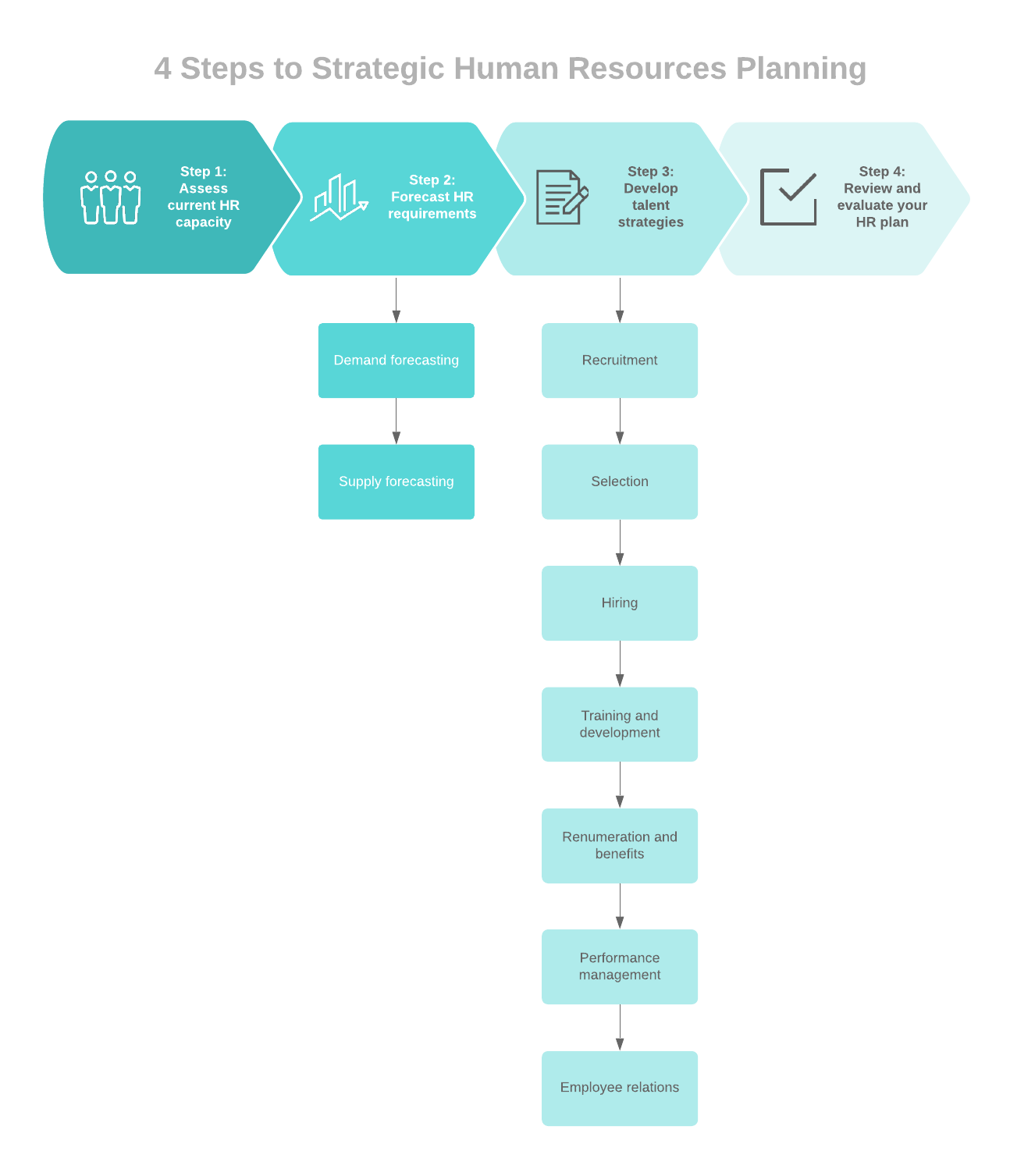
Introduction to strategic human resource planning
In order to improve the strategic alignment of staff and other resources, it’s essential to understand how to create a strategic HR planning process. At its most basic level, strategic human resource planning ensures adequate staffing to meet your organization’s operational goals, matching the right people with the right skills at the right time.
It’s important to ask where your organization stands currently and where it is going for your plan to remain flexible. Each company’s plan will look slightly different depending on its current and future needs, but there is a basic structure that you can follow to ensure you’re on the right track.
The strategic human resource planning process begins with an assessment of your current staff, evaluating whether it fits the organization’s needs. After that, you can move on to forecasting future staffing needs based on business goals. From there, you’ll need to align your organization’s strategy with employment planning and implement a plan to not only to hire new employees but also to retain and properly train the new hires—and your current employees—based on business changes.
Read on to understand human resource planning in more detail.
1. Assess current HR capacity
The first step in the human resource planning process is to assess your current staff. Before making any moves to hire new employees for your organization, it’s important to understand the talent you already have at your disposal. Develop a skills inventory for each of your current employees.
You can do this in a number of ways, such as asking employees to self-evaluate with a questionnaire, looking over past performance reviews, or using an approach that combines the two. Use the template below to visualize that data.
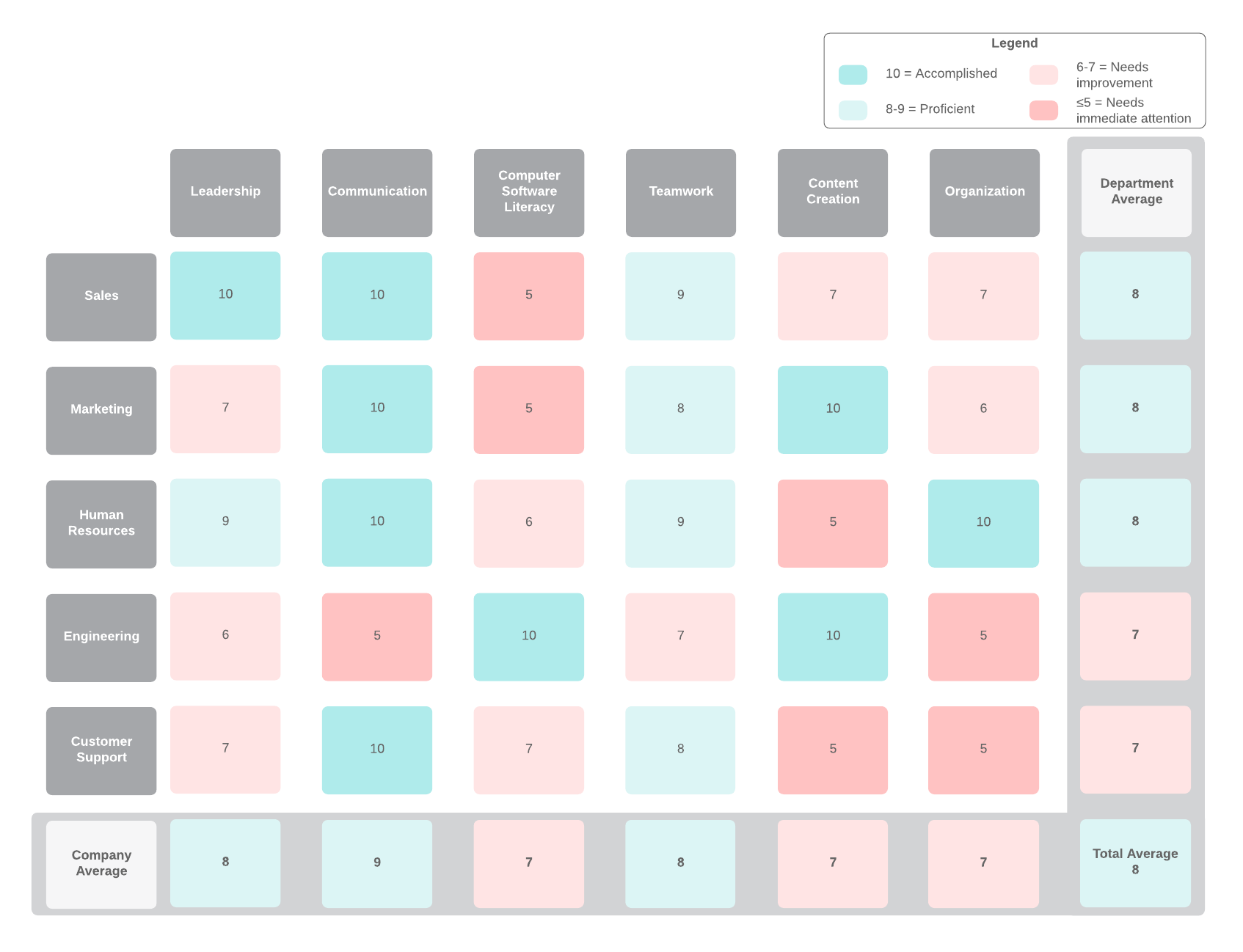
2. Forecast HR requirements
Once you have a full inventory of the resources you already have at your disposal, it’s time to begin forecasting future needs. Will your company need to grow its human resources in number? Will you need to stick to your current staff but improve their productivity through efficiency or new skills training? Are there potential employees available in the marketplace?
It is important to assess both your company’s demand for qualified employees and the supply of those employees either within the organization or outside of it. You’ll need to carefully manage that supply and demand.
Demand forecasting
Demand forecasting is the detailed process of determining future human resources needs in terms of quantity—the number of employees needed—and quality—the caliber of talent required to meet the company's current and future needs.
Supply forecasting
Supply forecasting determines the current resources available to meet the demands. With your previous skills inventory, you’ll know which employees in your organization are available to meet your current demand. You’ll also want to look outside of the organization for potential hires that can meet the needs not fulfilled by employees already present in the organization.
Need advice on calculating your staffing needs and developing a staffing plan?
We have you coveredMatching demand and supply
Matching the demand and supply is where the hiring process gets tricky—and where the rest of the human resources management planning process comes into place. You’ll develop a plan to link your organization’s demand for quality staff with the supply available in the market. You can achieve this by training current employees, hiring new employees, or combining the two approaches.
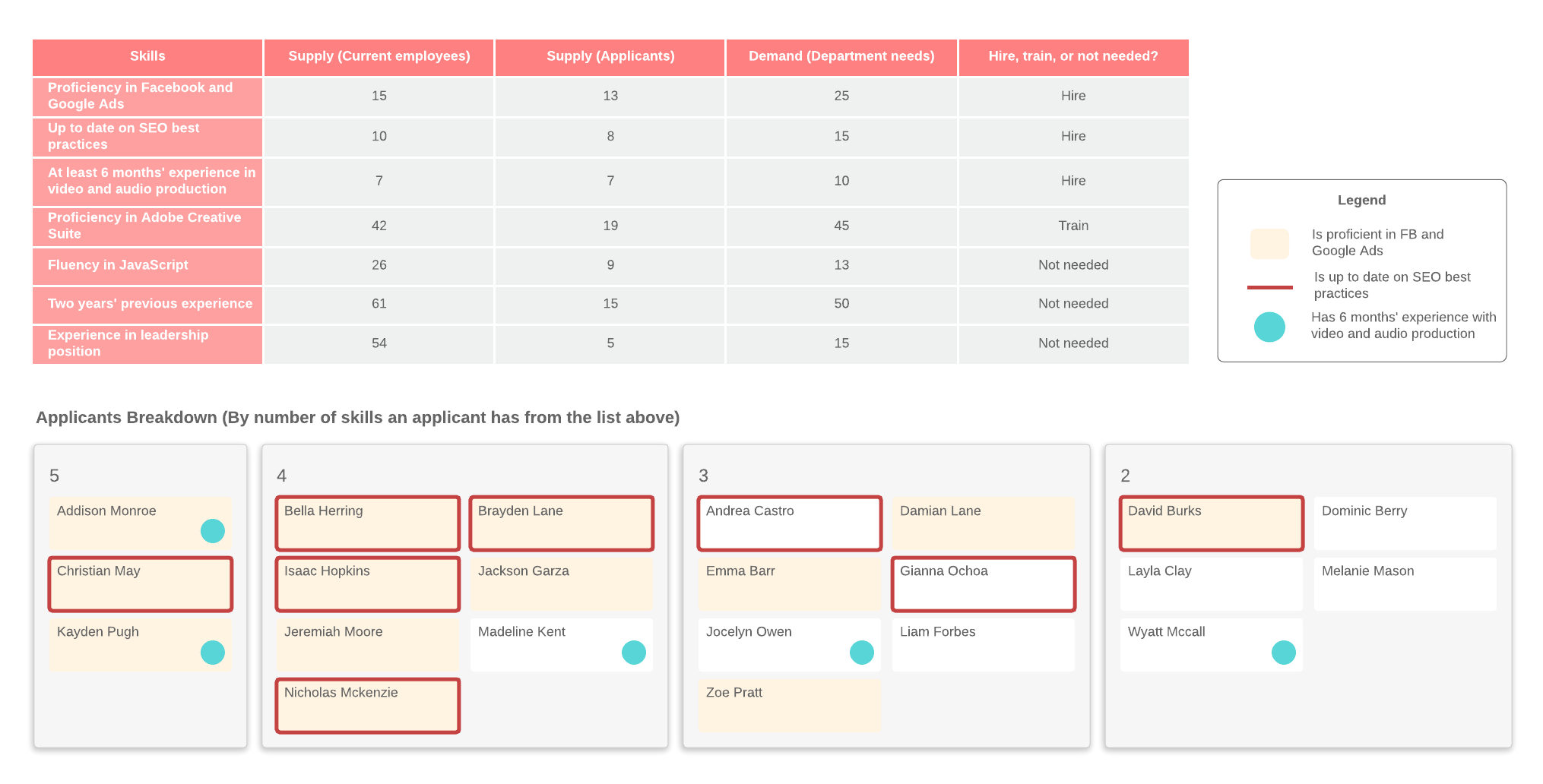
3. Develop talent strategies
After determining your company’s staffing needs by assessing your current HR capacity and forecasting supply and demand, it’s time to begin the process of developing and adding talent. Talent development is a crucial part of the strategic human resources management process.
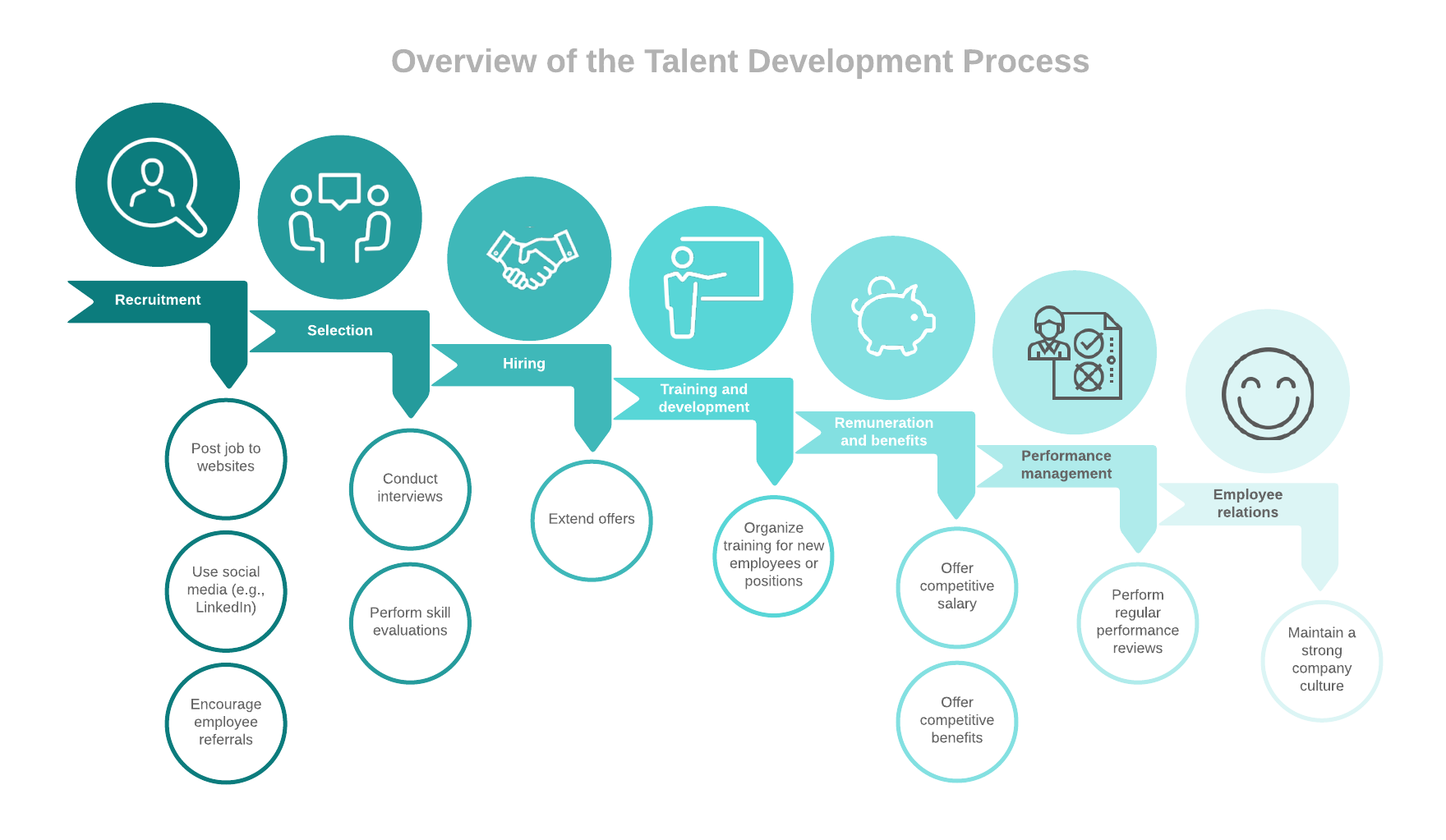
Recruitment
In the recruitment phase of the talent development process, you begin the search for applicants that match the skills your company needs. This phase can involve posting on job websites, searching social networks like LinkedIn for qualified potential employees, and encouraging current employees to recommend people they know who might be a good fit.
Selection
Once you have connected with a pool of qualified applicants, conduct interviews and skills evaluations to determine the best fit for your organization. If you have properly forecasted supply and demand, you should have no trouble finding the right people for the right roles.
Hiring
Decide the final candidates for the open positions and extend offers.
Bring clarity to the hiring process to find the best candidates for your company.
Learn the stagesTraining and development
After hiring your new employees, it's time to bring them on board. Organize training to get them up to speed on your company’s procedures. Encourage them to continue to develop their skills to fit your company’s needs as they change. Find more ideas on how to develop your own employee onboarding process, and then get started with this onboarding timeline template.
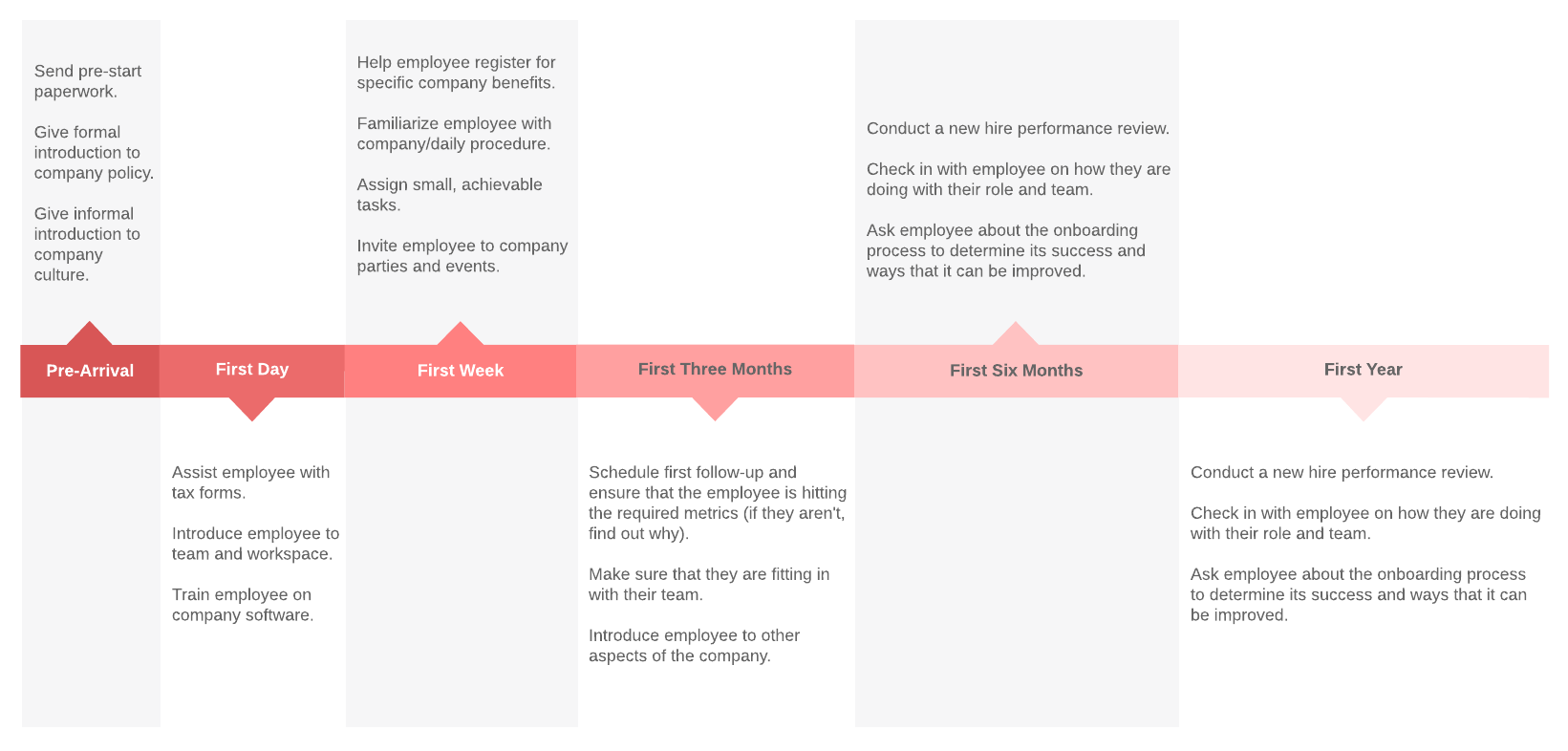
Employee remuneration and benefits administration
Keep your current employees and new hires happy by offering competitive salary and benefit packages and by properly rewarding employees who go above and beyond. Retaining good employees will save your company a lot of time and money in the long run.
Performance management
Institute regular performance reviews for all employees. Identify successes and areas of improvement. Keep employees performing well with incentives for good performance.
Employee relations
A strong company culture is integral in attracting top talent. Beyond that, make sure your company is maintaining a safe work environment for all, focusing on employee health, safety, and quality of work life.
4. Review and evaluate
Once your human resource process plan has been in place for a set amount of time, you can evaluate whether the plan has helped the company to achieve its goals in factors like production, profit, employee retention, and employee satisfaction. If everything is running smoothly, continue with the plan, but if there are roadblocks along the way, you can always change up different aspects to better suit your company’s needs.
Why document your strategic HR plan
Now that you know the steps to strategic human resource planning, it's time to adapt those steps to your own organization and determine how to execute.
There are a number of reasons to document your strategic human resources plan, particularly in a visual format like a flowchart. Through documentation, you standardize the process, enabling repeated success. Documentation also allows for better evaluation, so you know what parts of your plan need work. In addition, a properly documented plan allows you to better communicate the plan throughout the organization, including how everyone, from the top down, can contribute to make sure the plan works.
Document every step of the process, from beginning to end, and find room for improvement in your human resources process along the way.

Start creating your own strategic human resource plan with this template.
See it nowAbout Lucidchart
Lucidchart, a cloud-based intelligent diagramming application, is a core component of Lucid Software's Visual Collaboration Suite. This intuitive, cloud-based solution empowers teams to collaborate in real-time to build flowcharts, mockups, UML diagrams, customer journey maps, and more. Lucidchart propels teams forward to build the future faster. Lucid is proud to serve top businesses around the world, including customers such as Google, GE, and NBC Universal, and 99% of the Fortune 500. Lucid partners with industry leaders, including Google, Atlassian, and Microsoft. Since its founding, Lucid has received numerous awards for its products, business, and workplace culture. For more information, visit lucidchart.com.
Related articles
Hiring to Avoid Firing: Improving the Human Resources Life Cycle
Firing is the worst. Use these tips and free templates to visualize and improve your human resources lifecycle.
How to build a recruitment process
The success of your organization depends on the people you choose to build it. Learn how you can visualize your recruitment process and hire top talent.

